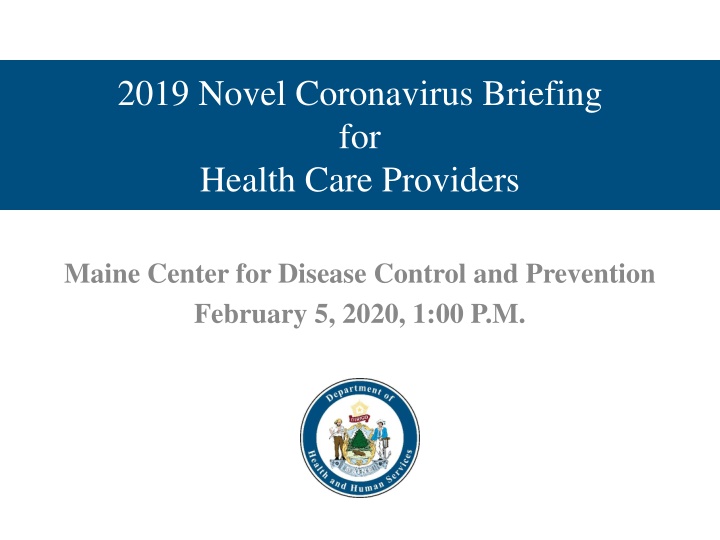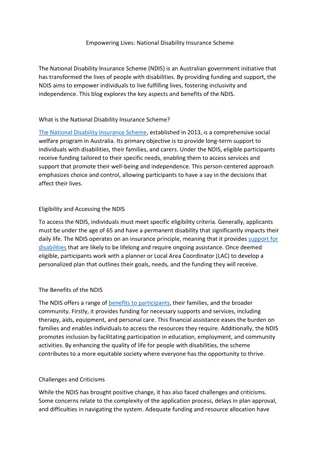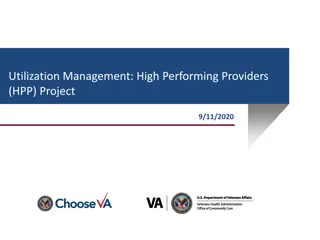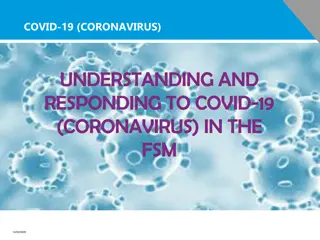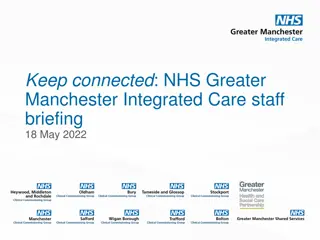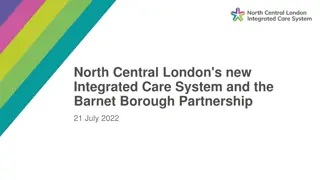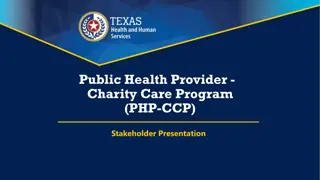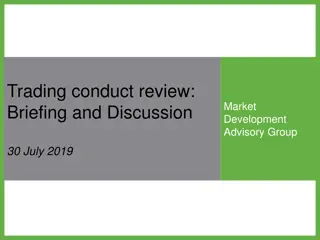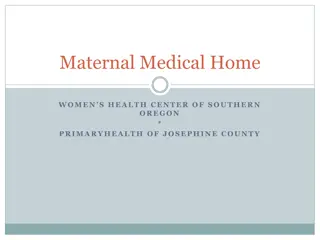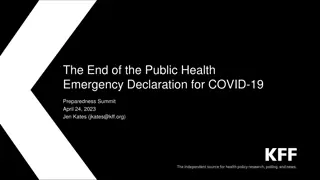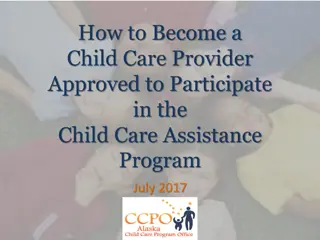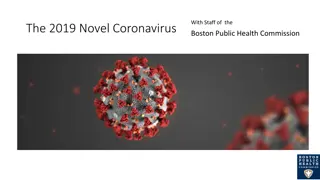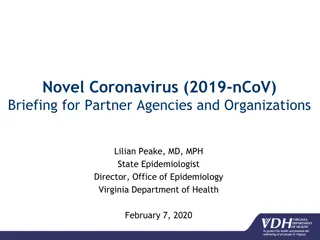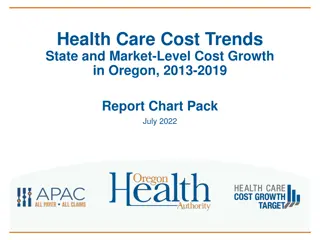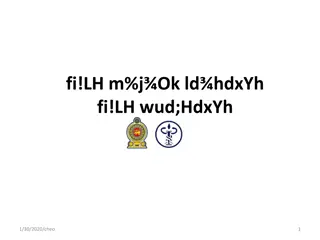2019 Novel Coronavirus Briefing for Health Care Providers
This briefing provides information related to the 2019 novel coronavirus outbreak, including the current situation in China, globally, and in the United States. It covers topics such as coronaviruses, transmission methods, early identification through triage symptoms, and case definition criteria. The presentation stresses the importance of healthcare preparedness, infection control, and immediate isolation of potential patients to prevent the spread of the virus.
Download Presentation

Please find below an Image/Link to download the presentation.
The content on the website is provided AS IS for your information and personal use only. It may not be sold, licensed, or shared on other websites without obtaining consent from the author.If you encounter any issues during the download, it is possible that the publisher has removed the file from their server.
You are allowed to download the files provided on this website for personal or commercial use, subject to the condition that they are used lawfully. All files are the property of their respective owners.
The content on the website is provided AS IS for your information and personal use only. It may not be sold, licensed, or shared on other websites without obtaining consent from the author.
E N D
Presentation Transcript
2019 Novel Coronavirus Briefing for Health Care Providers Maine Center for Disease Control and Prevention February 5, 2020, 1:00 P.M.
Agenda Current Situation Nirav D. Shah, MD, JD Director Maine CDC Dr. Siiri Bennett State Epidemiologist Coronaviruses Healthcare Preparedness Early Identification Infection Control Clinical presentation and testing Treatment 2
Current Situation: China ~24,400 cases in China, centered in Wuhan City, Hubei Province 3
Current Situation: Global 24,562 confirmed cases in 28 countries ~490 deaths 199 cases outside of China Limited person-to-person transmission ~1000 total recovered 4
Current Situation: United States Maine: (as of 02/05/2020) Confirmed cases = 0 PUIs = 0 Immediate risk for U.S. remains LOW. 5
Coronaviruses Enveloped virus https://www.webmd.com Spread by contact with infected secretions or by aerosol droplets Survivability outside the body: 1-2 days on nonporous surfaces (e.g. hard surfaces) 8-12 hours on porous surfaces (e.g. soft goods) Survivability dependent on temperature, humidity, inoculation size, etc. 6
Airborne Transmission https://www.journalofhospitalinfection.com/article/S0195-6701(15)00367-9/abstract 7
Early Identification: Triage Symptoms: Flu-like Fever and lower respiratory illness (e.g. cough, difficulty breathing) Runny nose Headache Sore throat Malaise https://www.chinahighlights.com/hubei/ map.htm Ask About Travel: Have you been outside of Maine in the last 30 days? Have you been to China in the last 14 days? 8
2019 nCoV Case Definition (subject to change) January 31, 2020 https://www.cdc.gov/coronavirus/2019-nCoV/hcp/clinical-criteria.html If you have a potential PUI isolate IMMEDIATELY!!! 9
Look-a-Like Illness MMWR Week 4 (ending 01/25/2020) Maine ILI Report posted online weekly at: https://www.maine.gov/dhhs/mecdc/infectious-disease/epi/influenza/influenza-surveillance-weekly-updates.shtml 11
Infection Control Additional Information: Family & Visitors: Restrict visitation. Offer visitation by phone or video-call applications Consider exceptions for end- of-life situations. Require PPE: mask, gown, gloves, eye Airborne Eye Protection Precautions (Googles or Face Shield) (AIIR, N95 or PAPR) CDC Duration of Precautions: Consult with Maine CDC @ 800-821-5821 on a case-by- case basis Standard Contact Precautions Precautions (Hand Hygiene, Respiratory Etiquette, etc) Environmental Disinfection: Verify product is EPA- approved and has efficacy to enveloped viruses or emerging viral pathogen claims (Gown, Gloves) AIIR = Airborne Infectious Isolation Room (a.k.a. Negative Pressure Room) 12
What if we do not have an AIIR? Droplet Precautions (No AIIR) Keep a mask on the Patient (Respirator and Eye Protection) CDC Standard Contact Precautions Precautions (Hand Hygiene, Respiratory Etiquette, etc) (Gown, Gloves) What if staff are not fit-tested/trained to respirators? -- Use a mask! 13
Transmission Initially associated with exposure to a live animal market No clear indication of any specific route of infection Now confirmed person-to-person spread occurring Primarily among very close contacts and household members Does not appear to be through casual contact Suggestion of spread by asymptomatic individuals, though not confirmed Risk factors for acquisition unknown and under investigation Infectious period unknown at this time Detection of viral RNA does not necessarily mean detection of infectious virus Don t know if more severe disease indicates prolonged infectious period 14
Epidemiology Early information suggest incubation period of ~5 days (range 2-14 days) Those at risk of severe illness Older age Presence of chronic medical conditions e.g. diabetes, CVD, chronic lung disease, chronic renal disease Immunocompromised 15
Clinical presentation Wide clinical spectrum, from mildly ill to severe disease For mild illness, presentation may show as non-specific respiratory signs and symptoms usually seen in viral respiratory infections Usually fever, cough Less frequently myalgia or fatigue Some reports of sore throat, headache, hemoptysis, diarrhea Half report dyspnea and SOB Radiologic findings CXR bilateral, sometimes unilateral infiltrates On chest CT, ground glass opacities with multiple areas of consolidation 16
Treatment Supportive treatment as for patients with any viral pneumonia With addition of more strict IC precautions No specific treatment No known antiviral effectiveness Follow clinical guidelines for management of community acquired pneumonia Avoid corticosteroids May prolong viral replication in the respiratory tract and continuation of infection Use only if indicated for another reason, e.g. treatment of COPD If patient stable and hospitalization is not clinically indicated, may be isolated at home if medically and socially stable No congregate settings Decision made in consultation with Maine CDC 17
Clinical course and complications Fever may be prolonged Potential for clinical deterioration in 2nd week in some patients Complications ARDS in 17-20% of cases Secondary infection in up to 10% of cases ICU required for respiratory support in 25-33% Acute cardiac injury 18
Laboratory Once identify a potential PUI: Maine CDC and HETL will coordinate nCoV testing with provider and federal CDC Call Maine CDC ASAP for guidance on specimen collection Will need 3 specimens: LRI (sputum, if possible), URI (NP and OP), Serum May take a couple days to receive results from federal CDC Testing not yet available to state laboratories Always test for other possible causes of illness, e.g. influenza, RSV If positive, nCoV infection unlikely but always possible to have a simultaneous infection Collect specimens ASAP and store per your institutional protocols For transport of specimens to HETL, refer to institutional biosafety guidelines for transport of specimens related to infectious diseases Laboratory test not available for hospitals or other primary care settings 19
Laboratory Testing Pre-approval from Maine CDC is needed for 2019-nCoV Laboratory Testing! Call: 1-800-821-5821 Once approval is received, specimen should be sent to the Maine CDC laboratory if testing approved by Maine CDC! https://www.maine.gov/dhhs/mecdc/public-health-systems/health-and-environmental-testing/micro/submitting-samples.shtml 20
Key Take-Aways Identify .Triage You must inquire about travel history --- START NOW! At reception AND During patient assessment Consider other common causes of respiratory infection, e.g. influenza, RSV, adenovirus Isolate IMMEDIATELY! If patient identified as a possible PUI, mask patient, immediately! HCW to don respirator and move patient to a isolation room, immediately! Post isolation signage Inform Communication Facility Infection Prevention and Control Facility Leadership/Team Lead It is a reportable condition; call Maine CDC @ 800-821-5821 21
Questions? Contact Maine CDC at 800-821-5821 22
